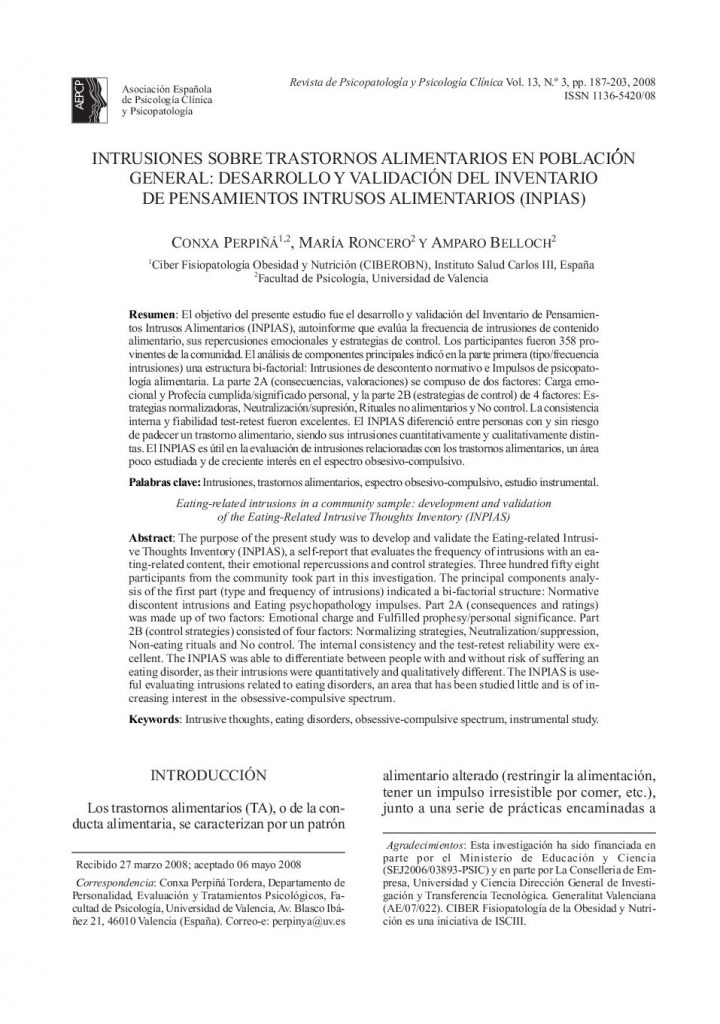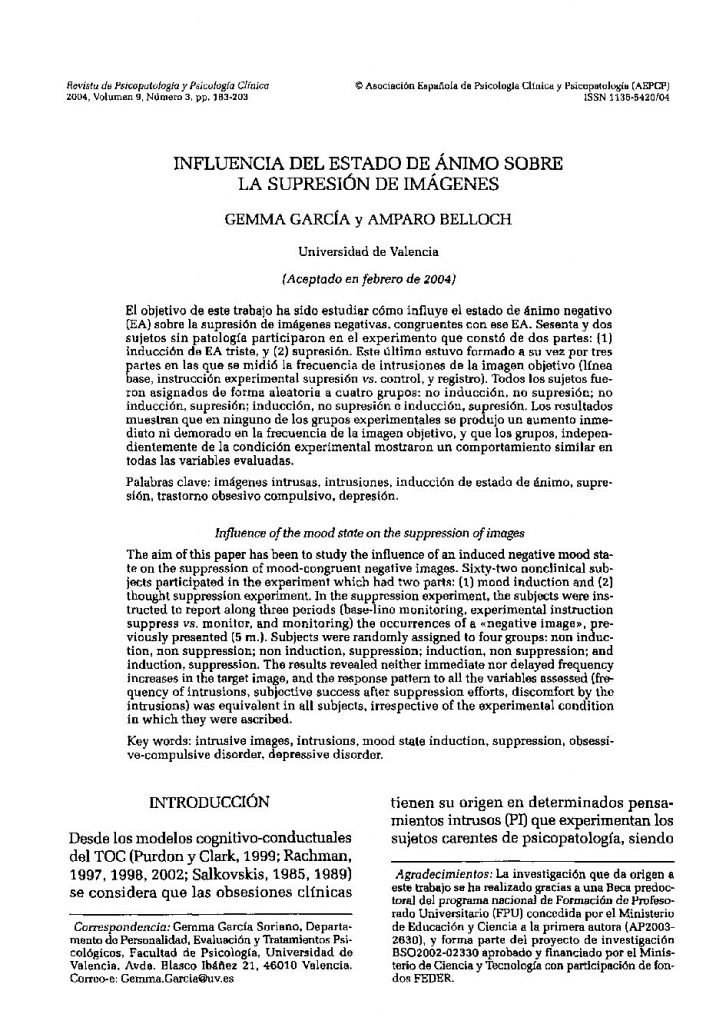Intrusiones sobre trastornos alimentarios en población general: Desarrollo y validación del Inventario de Pensamientos Intrusos Alimentarios (INPIAS).

- Sensibilidad al asco: Concepto y relación con los miedos y los trastornos de ansiedad.
- Las reacciones postraumáticas en infancia y adolescencia maltratada: El trauma complejo.
- Predictores psicosociales del consumo de tabaco en adolescentes: Extensiones de la teoría de la conducta planificada.
- Intrusiones sobre trastornos alimentarios en población general: Desarrollo y validación del Inventario de Pensamientos Intrusos Alimentarios (INPIAS).
- Síntomas seudo-psicóticos en adolescentes de la población general.
- Evaluación neuropsicológica y evolución cognitiva de un enfermo de Alzheimer bilingüe.
- Información sobre criterios de calidad de la Revista de Psicopatología y Psicología Clínica.
The purpose of the present study was to develop and validate the Eating-related Intrusive Thoughts Inventory (INPIAS), a self-report that evaluates the frequency of intrusions with an eating-related content, their emotional repercussions and control strategies. Three hundred fifty eight participants from the community took part in this investigation. The principal components analysis of the first part (type and frequency of intrusions) indicated a bi-factorial structure: “Normative discontent intrusions” and “Eating psychopathology impulses”. Part 2A (consequences and ratings) was made up of two factors: “Emotional charge” and “Fulfilled prophesy/personal significance”. Part 2B (control strategies) consisted of four factors: “Normalizing strategies”, “Neutralization/suppression”, “Non-eating rituals” and “No control”. The internal consistency and the test-retest reliability were excellent. The INPIAS was able to differentiate between people with and without risk of suffering an eating disorder, as their intrusions were quantitatively and qualitatively different. The INPIAS is useful evaluating intrusions related to eating disorders, an area that has been studied little and is of increasing interest in the obsessive-compulsive spectrum.
El objetivo del presente estudio fue el desarrollo y validación del Inventario de Pensamientos Intrusos Alimentarios (INPIAS), autoinforme que evalúa la frecuencia de intrusiones de contenido alimentario, sus repercusiones emocionales y estrategias de control. Los participantes fueron 358 provinentes de la comunidad. El análisis de componentes principales indicó en la parte primera (tipo/frecuencia intrusiones) una estructura bi-factorial: “Intrusiones de descontento normativo” e “Impulsos de psicopatología alimentaria”. La parte 2A (consecuencias, valoraciones) se compuso de dos factores: “Carga emocional” y “Profecía cumplida/significado personal”, y la parte 2B (estrategias de control) de 4 factores: “Estrategias normalizadoras”, "Neutralización/supresión”, “Rituales no alimentarios” y “No control”. La consistencia interna y fiabilidad test-retest fueron excelentes. El INPIAS diferenció entre personas con y sin riesgo de padecer un trastorno alimentario, siendo sus intrusiones cuantitativamente y cualitativamente distintas. El INPIAS es útil en la evaluación de intrusiones relacionadas con los trastornos alimentarios, un área poco estudiada y de creciente interés en el espectro obsesivo-compulsivo.




